How I bought a Frank Lloyd Wright house at 31[.md]

I own a home designed by Frank Lloyd Wright: the Goetsch–Winckler house, an early, pre-war Usonian built in 1940 for two women art professors located near Lansing, Michigan.
I bought it in part to enjoy it, sure, but moreso with the intent to share it with others: public tours, student field trips, art shows, open houses, community events, and even overnight stays . . . I really just want others to experience Wright's architecture the way it deserves to be seen. The house has spent most of its life out of public view, and I want to change that.
Over the past couple of years we've done plenty of press, so I'm very accustomed to talking about the history of the house and its original owners — but not so much my own. I'll do my best to not belabor the point, but you don't buy a Frank Lloyd Wright home at 31 without it being kind of a long story.
TL;DR: it took a bit of luck, a lot of passion, and taking a few risks that paid off.
Childhood
I grew up in a small town outside of Rochester in upstate New York. I'm not going to shy away from the fact that I was very fortunate to have a comfortable, suburban childhood, but even so I was never satisfied with my environment. At young age, on more than one occasion I'd stay up all night rearranging all the furniture in my parent's house (much to their constant dismay). I played The Sims, but not actually to play the game — just to design houses. I was just so restless . . . something felt like it was missing, but I didn't know quite what it was yet.
My father always made a point to visit historic homes whenever we traveled, but I'd never seen anything that really resonated with me. In my early teens however, my family did a camping trip through Pennsylvania, which was when I had my first encounter with Frank Lloyd Wright's work. We toured through Fallingwater, which was beautiful (obviously), and yet I didn't quite grasp it as a residential structure. But then we went to nearby Kentuck Knob, a 1956 Usonian built twenty years after Fallingwater, and something finally clicked.
Last year I asked my dad about that trip, and he said that after the tour I turned to him and said, "Dad, I need to live in a house like this."
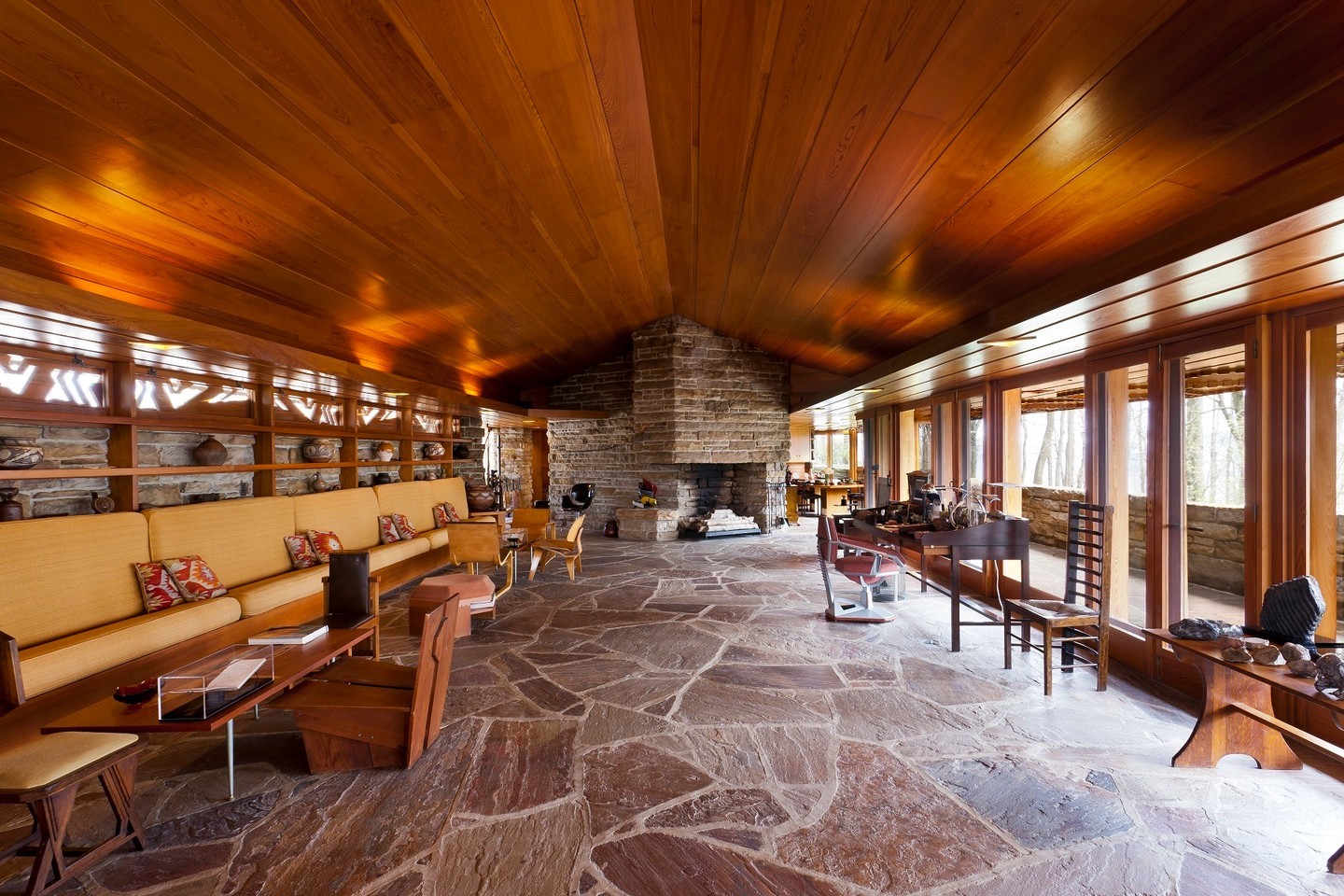
Kentuck Knob via @kentuckknob.
I think a lot of my values have come from him. He's a hobby craftsman with a real appreciation for old things, and he spent a decade restoring a 19th-century classical revival mansion in Naples, New York entirely by himself. He gives historical tours there now and runs it as a B&B during summers. Growing up around that, I guess it's not surprising that I wound up drawn to things with history — old puzzles, vintage furniture, old sci-fi books, Soviet-era wristwatches, and, of course, architecture.
Since that trip, I hoped to live somewhere architecturally significant. I never expected to live in a Wright home per se, but I had certainly set my sights on "good architecture".
At some point I discovered the Goetsch–Winckler house. I don't remember when exactly, but it immediately became one of my favorite Wright homes.
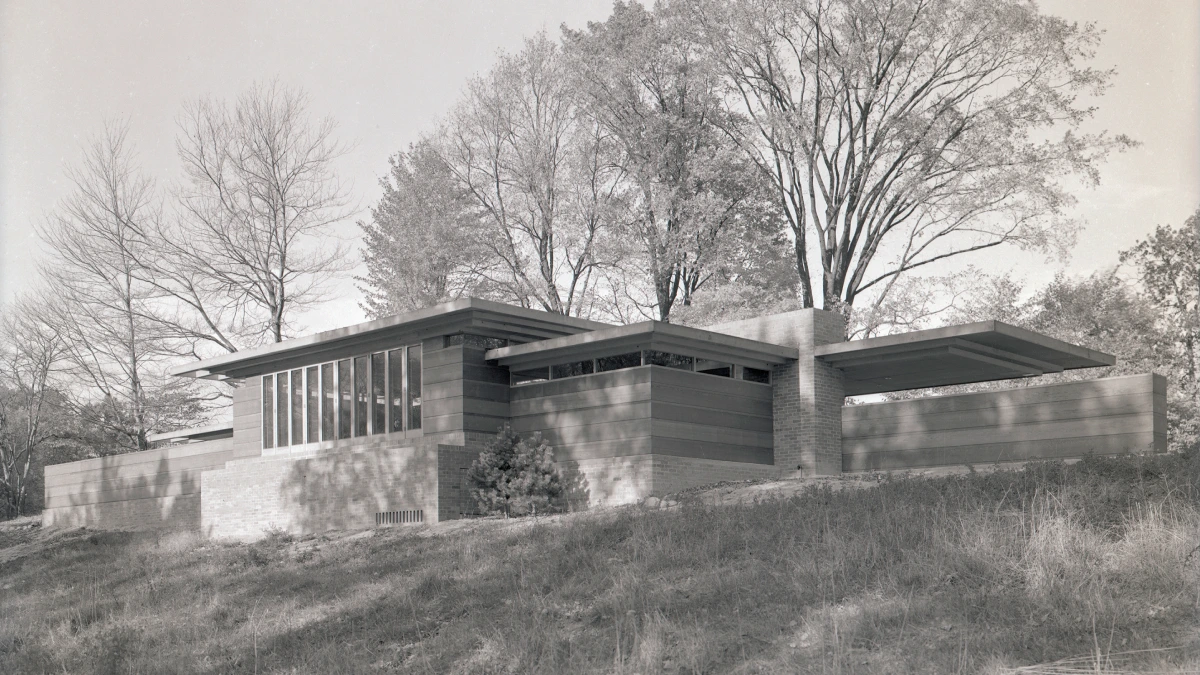
Goetsch–Winckler house via Archives of Michigan.
I love small, efficient, inline Usonians, and I genuinely believe that G–W is a very important piece of Wright's body of work: early, pre-war, built under budget, stripped down to its essentials, yet still incredibly elegant in both form and function. It embodied Wright's ideals without any superfluous ornamentation or extravagance — one of a few true examples of his vision for Usonia.
Education
My dad studied engineering, and I too had a strong interest in STEM. In 2010, I started college in physics and spent a year in the program before realizing that it just wasn't something I wanted to do that for the rest of my life. I still loved physics, but I just didn't see that being my career. I considered math, but at the same time I also loved visual design. Nothing freehand, but grid systems, user interfaces, print design . . . really anything with structure. I then realized that architecture was kind of a perfect marriage between math and physics and art.
I almost switched majors, but in my free time I was teaching myself how to program and build websites as a hobby — a different kind of "architecture". My dad suggested that I pursue software instead. It seems so obvious now, but at the time it just seemed like fun to me . . . "Why would I go to school for something fun?" My university offered a great sofware degree program, so I ended up making the switch to software engineering with a focus on digital and interactive media. In 2014, I graduated and moved to San Francisco.
Post-Graduation
My first job out of school was at a small digital agency where I learned a lot of the foundational skills and appreciation for good software that laid the foundation for the rest of my career. In 2017 I joined a startup building an e-signature platform (basically a Docusign competitor). Then in February 2019, we were acquired by a large tech company. I got lucky: I was at the right place at the right time. I had joined at Series B and had some stock, and unlike most stock at startup companies, it actually ended up being worth something.
Nothing crazy, but certainly more than I expected to have in my twenties. Working at a large tech company afterward also had its benefits, which allowed me to accelerate my saving for the future. It was this stroke of fortune that would really make the next five years possible.
COVID
In 2020, things changed following the pandemic. I was lucky to meet my wife (who joined Hinge only because she was bored during lockdown), and my company permanently transitioned to a mostly remote style of working. By this time, we both had been in SF for more than five years and we felt like we'd done the "city thing" and were ready to settle down, simplify our lives, and maybe take steps towards starting a family.
I began looking at architecturally significant houses in areas with a lower cost of living. I even looked at some work by Wright's apprentices — the Grabow House in Rochester, Minnesota designed by Jack Howe, Wright's chief draftsman, was an example of a home on the market that stood out to me, but it was much too far outside of the budget and just all around too big for us. I also set up Google alerts for many of Wright's students and favorited every home of theirs on Zillow that I could find.

Grabow house via Docomomo US.
That July, the Goetsch–Winckler House was listed for sale, but my wife was still finishing her teaching degree, I couldn't afford it, and it really just didn't make sense for us at the time. Even so, after seeing that it had sold a few months later really affected me. I felt genuinely depressed and for weeks I had bad dreams about it. I figured the chance would never come again.
The Currin Residence
Around that time, I discovered Midland, Michigan. After a dam failure flooded much of the city, a lot of really incredible mid-century modern homes had been damaged. I learned about Alden B. Dow, who was a very brief Wright apprentice, but lifelong friend of his. Dow was really his own architect with his own approach to architectural principles and design, and Midland is full of his work and the work of his apprentices.
One such apprentice was Francis E. "Red" Warner, and one of his early homes had been impacted by the flood. It was a beautiful mid-century modern home, but the basement wall had caved in and water had filled the basement within six inches of the first floor. After the damage, the house was stripped down to its subfloor, but it was this perfect shell of a mid-century home: never renovated, completely unaltered, and owned by a single owner its entire life.
But, due to the damage, it was unmortgageable.
So, the only path forward was to make an all-cash offer . . . and so we did. We were able get it for a pretty good price due to the damage but, even so, it cost just about every penny I had. My wife and I poured a ton of love and sweat equity into the home, spending summers over three years meticulously restoring it. It took years before the place truly felt like a home, and by 2023 we finally decided to move to Michigan full-time.
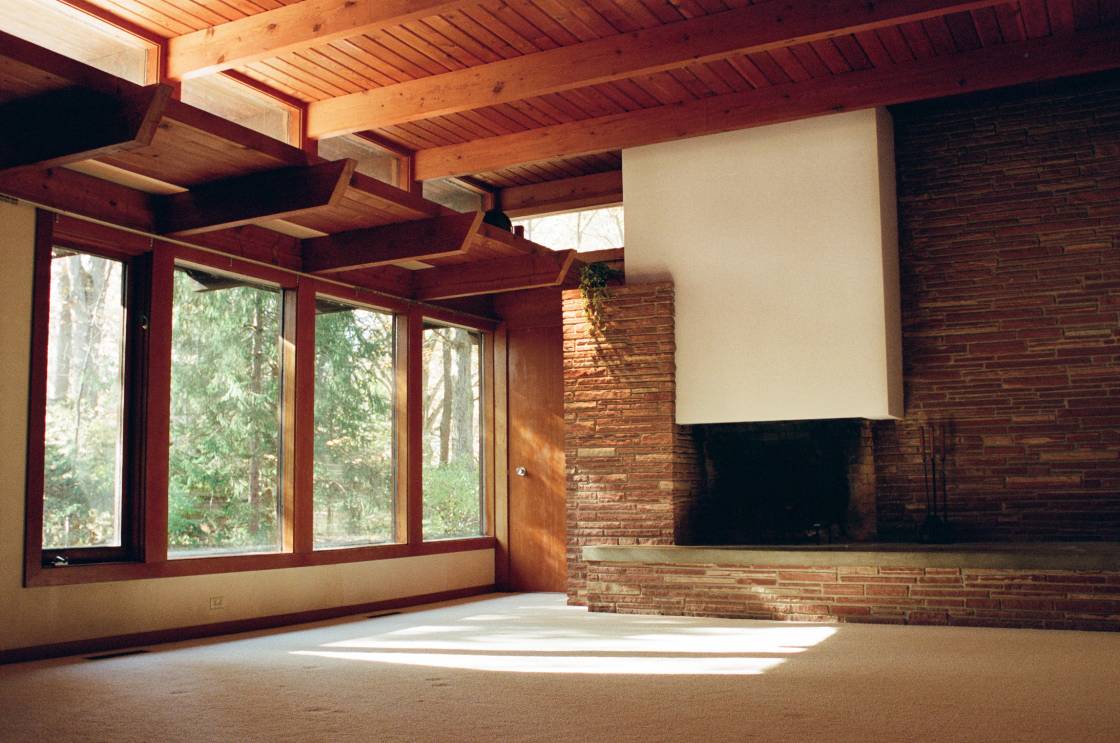
Currin residence via @currinresidence.
Goetsch–Winckler House
A few years later, I remember I was sitting on the couch with my wife scrolling through one of my feeds, then my heart skipped a beat: I saw that Goetsch–Winckler was for sale again.
Later that week I flew out to San Francisco for a work trip and spent much of that time considering the possibility of owning the home. Initially, I didn't plan on buying it — I mean, we didn't want or need a second house (Currin was already a stretch), and we're not "real estate people" or house flippers or anything like that. But this was my dream since I was a kid, and we were in a position (barely!) to be able to make it happen.
When I flew back home, I told my wife, "I think I want to do it." She said she'd support it, so long as I prove that I could make it work.
I spent a week pouring over finances, creating spreadsheets, and crunching numbers. It was possible, but there was one major hiccup: because of the preservation easement on G–W (which protected the home while subordinating mortgages), no traditional lender we approached was willing to work with us — the house was just too weird. But, since we had full equity in the Currin residence and it had appreciated significantly following the restoration, we were able to mortgage it to help pay for G–W. We also sold most of our investments to cover the gap and made an offer, which was accepted.

Goetsch–Winckler house via @goetschwincklerhouse.
My motivation has always been to share it. I've never seen myself as the home's owner; I'm just its current steward (or "careful caretaker" as I like to call myself). It's one of my all-time favorite Wright homes, and it's spent most of its life hidden from public view. I wanted to activate it with the community through public tours, student field trips, art shows, open houses, community events, and even overnight stays (cautiously!) to help fund its preservation — my goal was to make it a place people could actually experience. I wanted to make it famous.
The home was actually in really great condition, but we still found a few restoration projects to work on. We re-screened almost all the home's 38 doors and windows, we re-glazed the bathtub back to its original Persian brown, and dealt with a few pest issues. We plan to continue the work of previous owners of stripping the paint from the exterior to reveal the natural wood grain. We've also managed to acquire almost two dozen original works of art from the home's first owners that we've donated to the home's archive.
We've always offered tours for free, because we believe the home should be accessible to everyone, not just those who can afford the Airbnb rate. We used to offer tours on an ad hoc basis, but this last year we've formalized our tours and have offered one every single month. And honestly, we can't keep up with demand, but I guess that's a good problem to have.
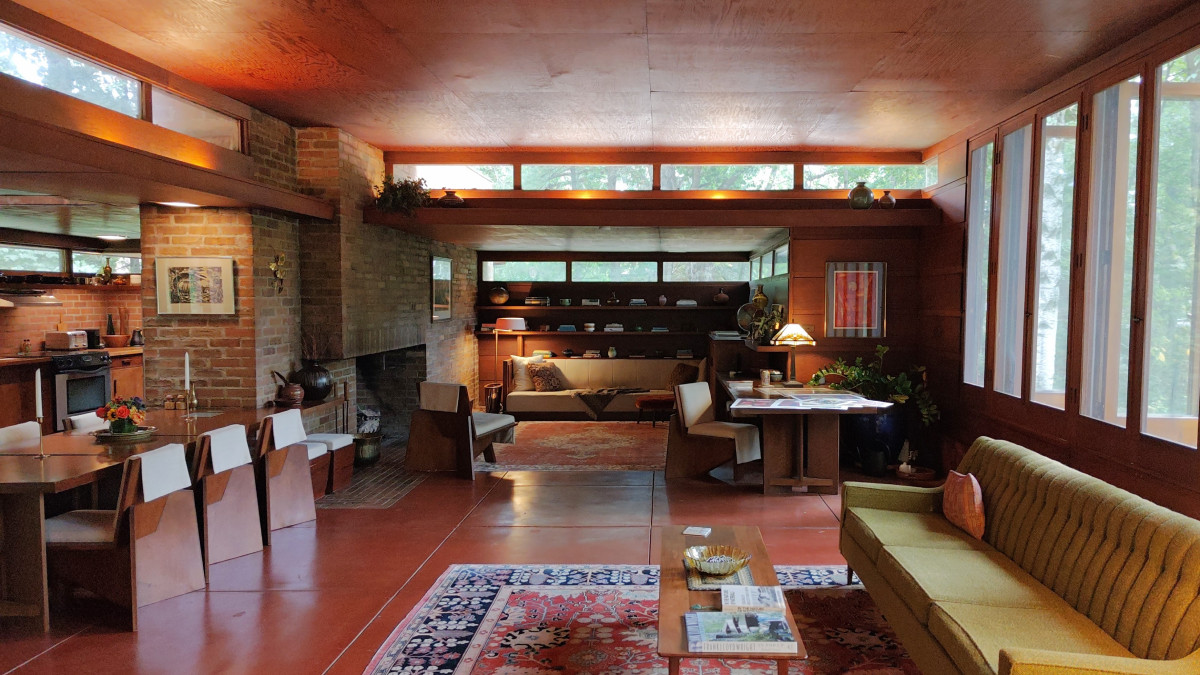
Goetsch–Winckler house via @goetschwincklerhouse.
We've started partnering with the community and Michigan State University, and we've already hosted photoshoots, art shows, field trips for architecture and interior design students, small events, and even a planning meeting for a local architecture firm. I'd love to do even more. The home was built to be used, not collected like a trophy — and that's exactly what both Wright and the original owners intended. In their inquiry letter, Goetsch and Winckler asked for a space where they could both create art as well as entertain.
I'm young and I still have a lot to learn. Finding the right balance between preservation, accessibility, and sustainability has been challenging, but I'm also very aware of how fortunate we are to have the opportunity to live in and care for this place, so it's a challenge I'm glad to take on.
Seeing people experience Wright's architecture in a real, lived space — not as a museum, and not in a book — reminds me why it's important to continue to keep the home open.
Thankful
Especially with Thanksgiving around the corner, I'm very cognizant of the fact that I've been very lucky to be in this situation, and how fortunate and thankful I am for my childhood and the choices (and luck) along the way that made all of this possible.
Just this week I was at a company onsite in New York City when a co-worker posed a question to our group, "if you could go and live anywhere, where would you want to live?"
When it finally came around to me, I wasn't quite sure what to say, because somehow I already get to live in the house of my dreams with the person I love. ♥
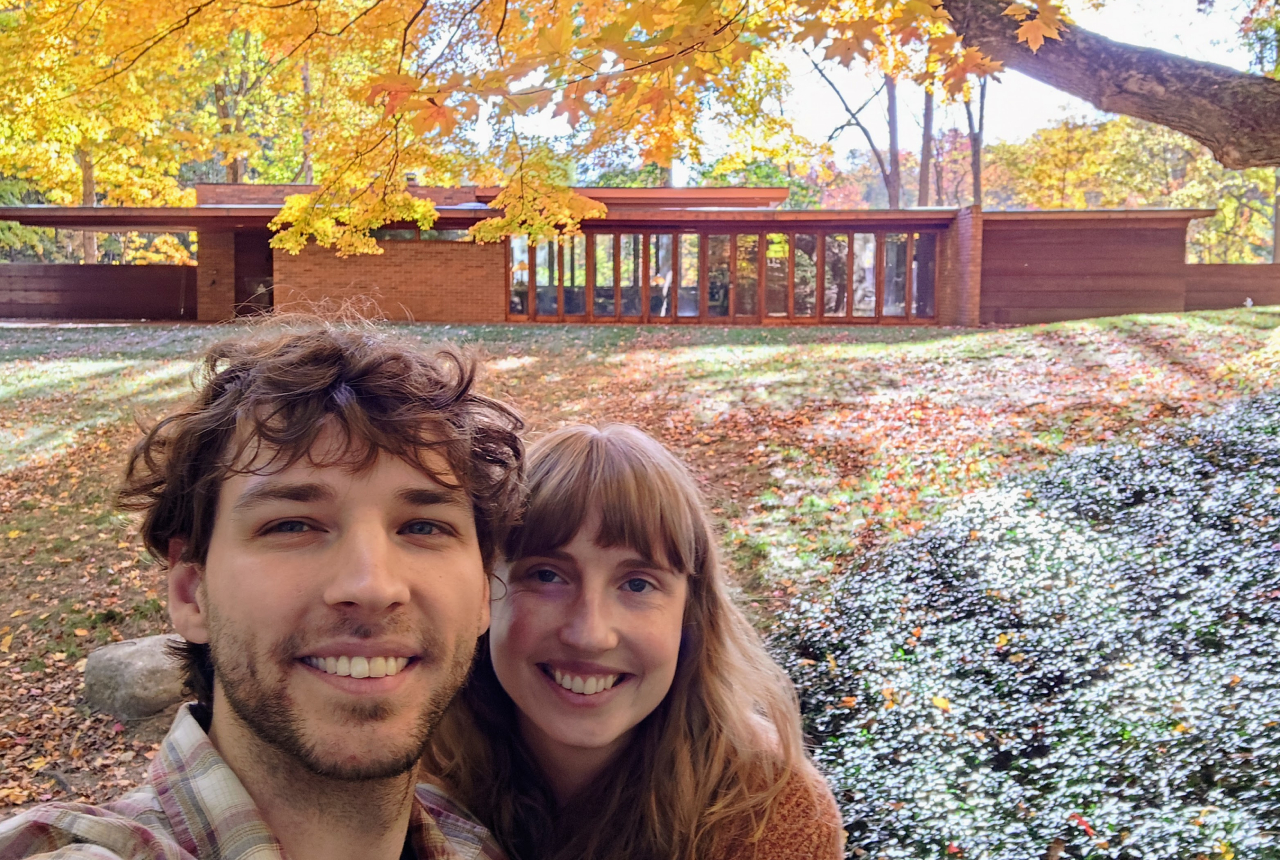

Comments